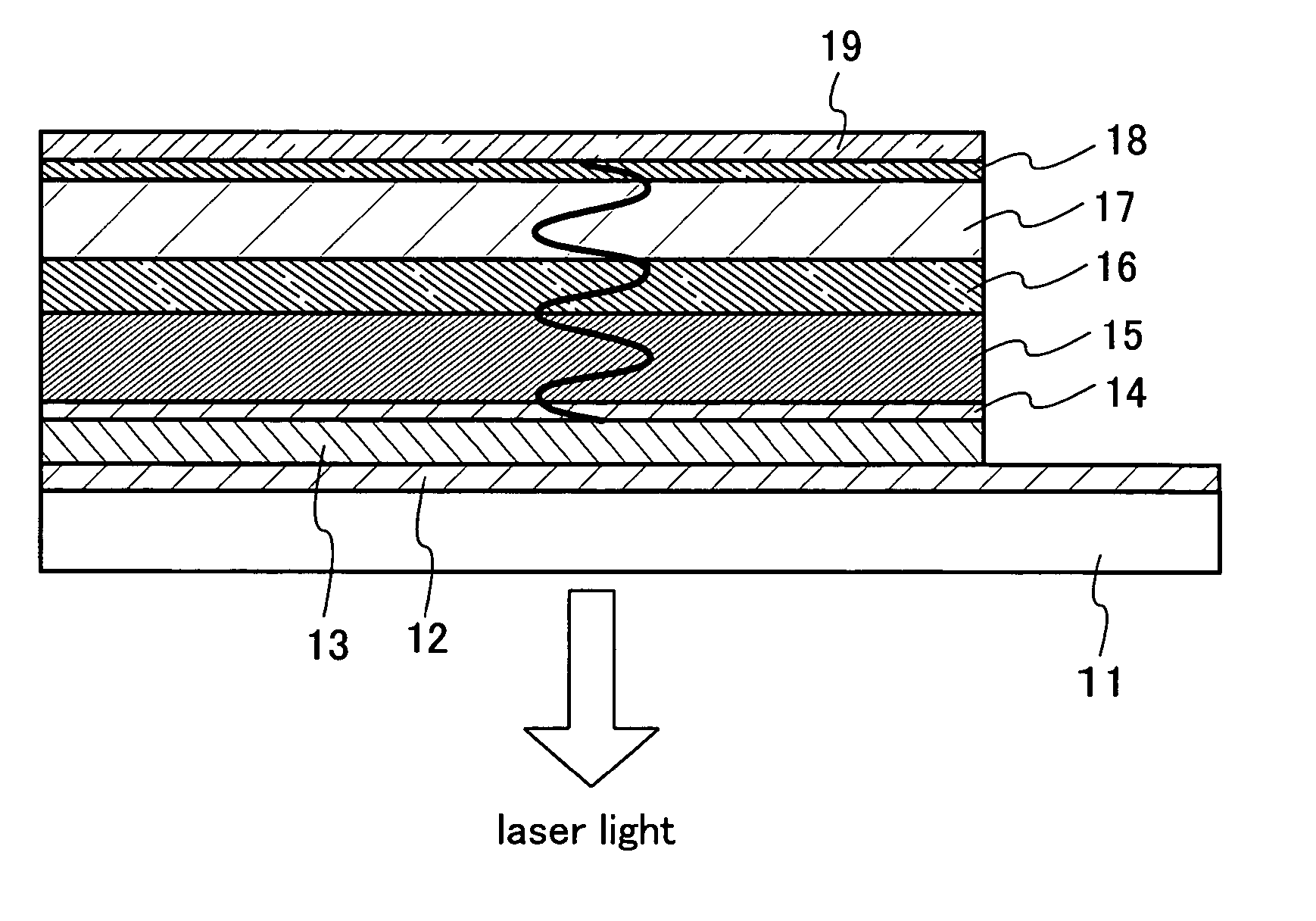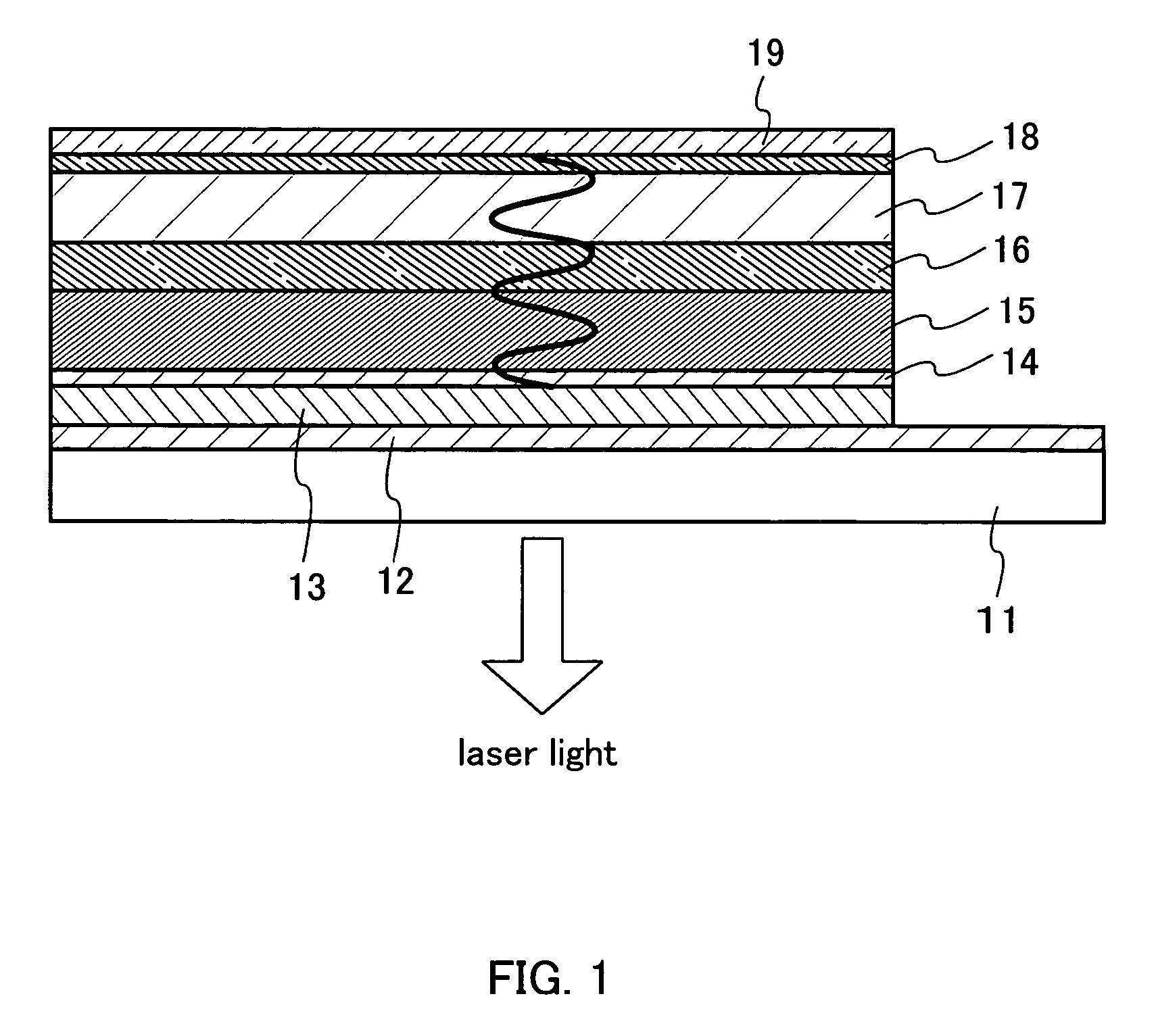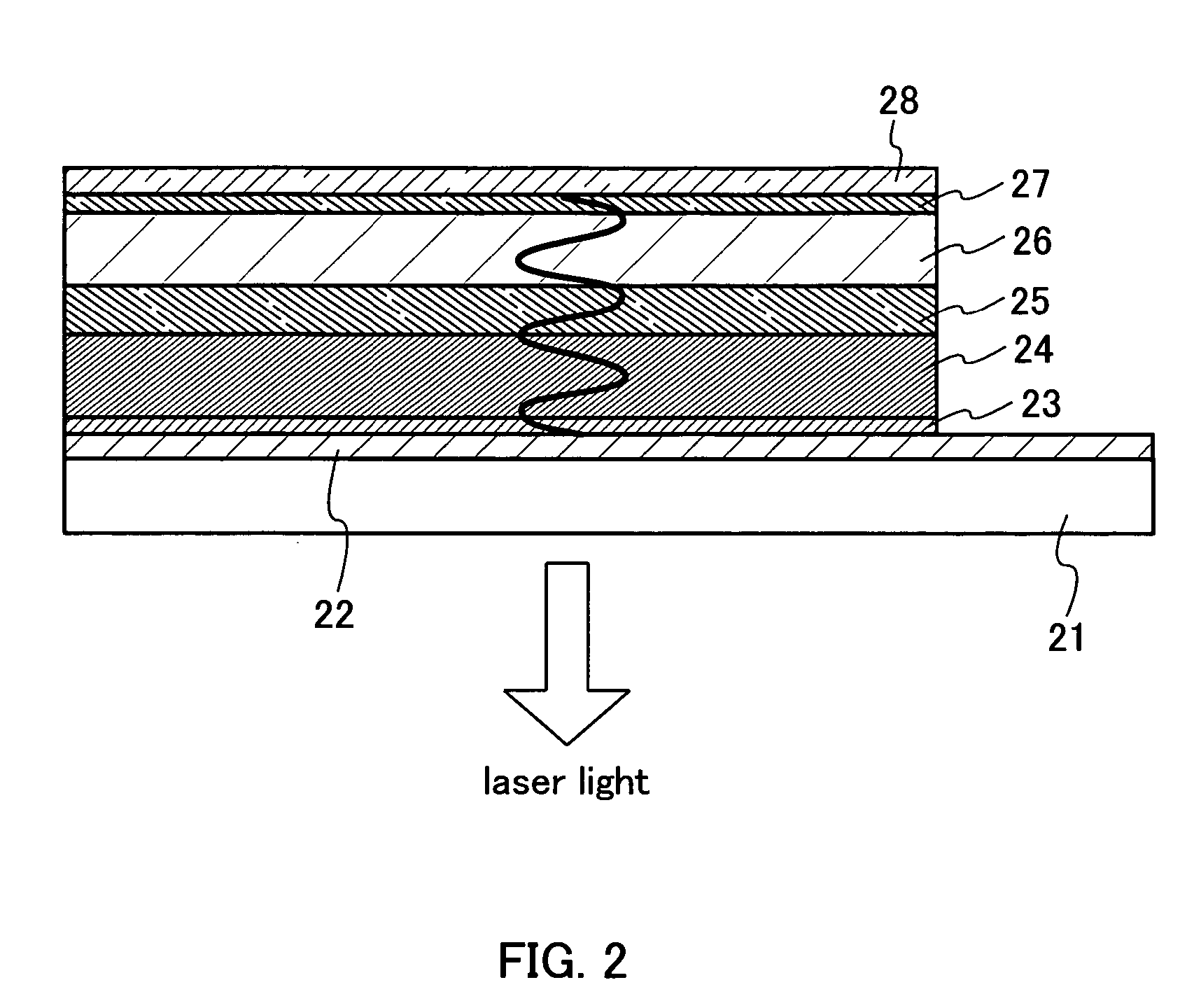Organic laser apparatus
a laser apparatus and laser technology, applied in lasers, semiconductor lasers, active medium materials, etc., can solve the problems of large energy required for laser oscillation, light emission cannot function as laser light, and conventional organic el elements cannot allow high density current to flow
- Summary
- Abstract
- Description
- Claims
- Application Information
AI Technical Summary
Benefits of technology
Problems solved by technology
Method used
Image
Examples
embodiment mode 1
[0048] Described in this embodiment mode is a structure in which laser light can be extracted from a substrate side (an anode side) in a laser apparatus in which an electrode and an organic compound layer are laminated on the substrate. FIG. 1 shows a laser apparatus of this embodiment mode structured by laminating a plurality of layers on a substrate 11. In this embodiment mode, since laser light is extracted from the substrate side 11, a substrate which transmits laser light is required. Specifically, glass, quartz, transparent plastic, or the like can be employed. Reference numeral 12 denotes an anode to which metal, alloy, electrical conductive compound, or mixture thereof can be employed and a work function is not exclusively required to be taken into consideration. The reason is that a conductive reflector 13 formed on the anode 12 injects a hole into the organic compound layer, thus the anode 12 is required only to form an ohmic contact with the conductive reflector 13. Howev...
embodiment mode 2
[0061] Described in this embodiment mode is a structure of a laser apparatus in which an anode is utilized as a reflecting mirror. For a substrate 21 in FIG. 2, the same material as those described in Embodiment Mode 1 can be employed. An anode 22 is formed on the substrate 21. The anode 22 also functions as a reflecting mirror. Accordingly, the anode 22 is made by a material having small visible light absorption property, high reflectance, and conductivity. For the hole injection into an organic compound layer, it is necessary to choose a material with a high work function (a work function of at least 4.0 eV). Ag, Pt, Au, or the like can be used, which satisfy these requirements. The anode 22 functioning as a reflecting mirror has preferably the reflectance of approximately 50% to 95% in order to extract laser light therethrough.
[0062] The same organic compound layer as the one in Embodiment Mode 1 is formed on the anode 22, that is, a hole injecting layer 23, a hole transporting ...
embodiment mode 3
[0064] Described in Embodiment Modes 1 and 2 are structures in which a resonator structure is formed between an anode or a conductive reflector functioning as a reflecting mirror on the anode and a cathode to occur light amplification and induced radiation due to population inversion produced by current, thus laser oscillation is realized. In these cases, light amplification is performed between electrodes or between the conductive reflector and the cathode, which necessarily increases a film thickness of an organic compound layer. Since that brings an increase in driving voltage directly, voltage for oscillating laser is increased. Described in this embodiment mode is a structure of a laser apparatus in which a reflecting mirror is provided under a transparent electrode and the transparent electrode is incorporated into a part of a resonator so that the film thickness of an organic compound layer can be reduced.
[0065] In FIG. 3, laser light is extracted from a substrate side 31, t...
PUM
 Login to View More
Login to View More Abstract
Description
Claims
Application Information
 Login to View More
Login to View More - R&D
- Intellectual Property
- Life Sciences
- Materials
- Tech Scout
- Unparalleled Data Quality
- Higher Quality Content
- 60% Fewer Hallucinations
Browse by: Latest US Patents, China's latest patents, Technical Efficacy Thesaurus, Application Domain, Technology Topic, Popular Technical Reports.
© 2025 PatSnap. All rights reserved.Legal|Privacy policy|Modern Slavery Act Transparency Statement|Sitemap|About US| Contact US: help@patsnap.com



